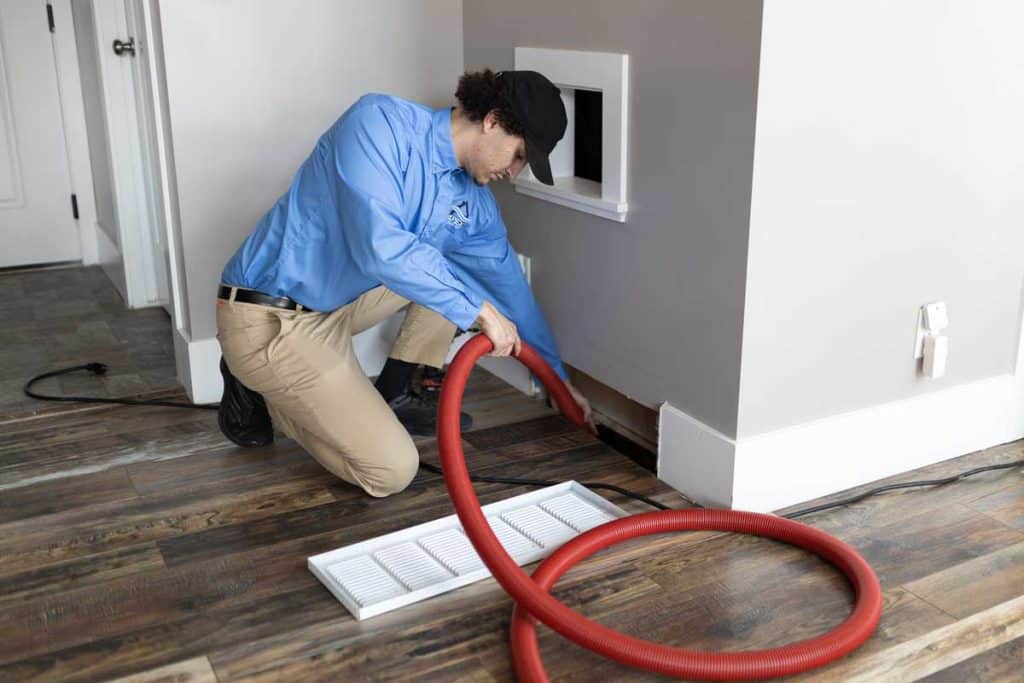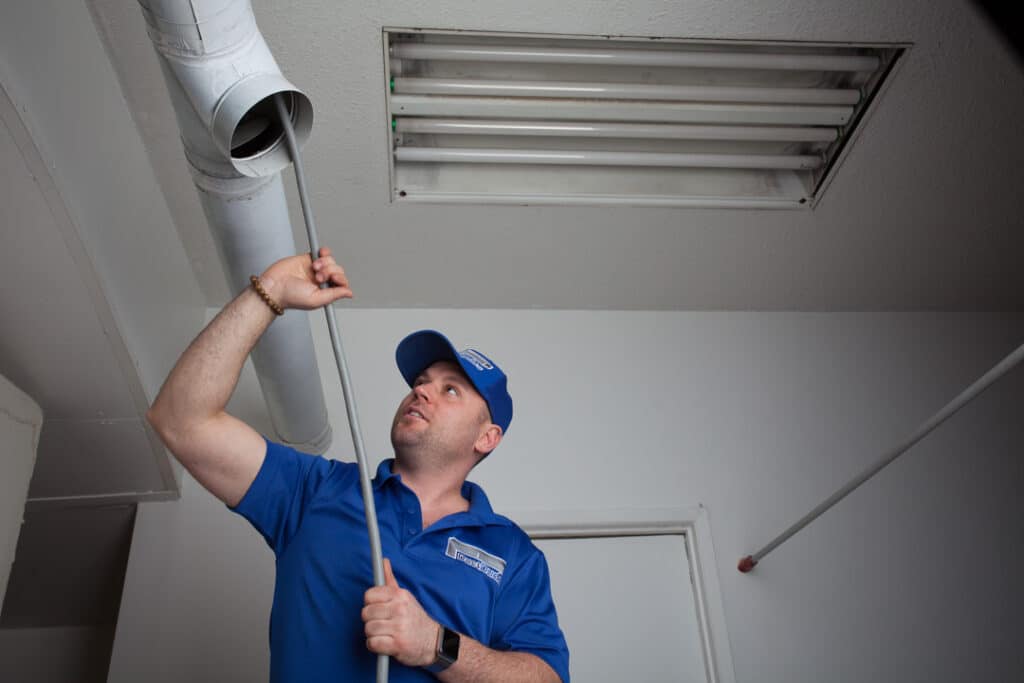In today’s world, ensuring a clean and healthy environment inside our homes and workplaces has become a priority. Among various aspects of maintaining indoor air quality, the question arises: Is duct sanitizing necessary? To answer this, we must explore the benefits, processes, and implications of duct sanitizing, especially for homeowners and business owners.

The Importance of Indoor Air Quality
Indoor air quality is crucial for our health and well-being. Poor air quality can lead to various health issues, including allergies, asthma, and respiratory infections. Understanding how duct sanitizing can improve air quality is essential. Learn more about air duct sanitizing and its role in air quality improvement.
What is Duct Sanitizing?
Duct sanitizing involves cleaning and disinfecting the air ducts of HVAC systems to remove contaminants and prevent microbial growth. This process ensures that the air circulating in your home or office is clean and free from harmful pathogens.
Benefits of Duct Sanitizing
Sanitizing air ducts offers numerous benefits. It not only enhances air quality but also improves the efficiency of HVAC systems, leading to energy savings. Additionally, it helps in reducing allergens and unpleasant odors, creating a more comfortable and healthy environment.
Reduction of Allergens
For individuals suffering from allergies, duct sanitizing can be a game-changer. By removing dust, pollen, and other allergens trapped in the ducts, it significantly reduces allergy symptoms. Discover how ventilation aids in allergy control and contributes to a healthier home.
Energy Efficiency
A clean duct system allows air to flow freely, reducing the strain on HVAC units. This not only prolongs the lifespan of the system but also reduces energy consumption, leading to lower utility bills.
When is Duct Sanitizing Necessary?
While routine cleaning is recommended, certain situations warrant immediate duct sanitizing. These include post-construction or renovation, mold growth in ducts, or when moving into a new home.
Post-Construction Cleaning
Renovations can leave behind dust and debris in the ductwork. Post-construction duct sanitizing is essential to remove these contaminants. Improve air quality during remodeling with timely duct cleaning.
Mold and Mildew
If you notice mold growth in your ducts, immediate sanitizing is crucial to prevent health risks. Mold spores can spread through the air, causing respiratory issues and infections.
DIY vs. Professional Duct Sanitizing
While some homeowners may attempt to clean ducts themselves, professional duct sanitizing is recommended for thorough and effective results. Professionals have the necessary tools and expertise to ensure a complete cleaning process.
Advantages of Professional Services
Professionals use specialized equipment to reach all parts of the ductwork, ensuring no area is left untreated. They also use EPA-approved disinfectants to effectively eliminate bacteria and mold.
Choosing the Right Duct Sanitizing Service
When selecting a duct sanitizing service, consider factors such as experience, customer reviews, and certifications. A reputable service will provide a detailed inspection and offer a customized cleaning plan.
Questions to Ask
Before hiring a service, ask about their cleaning methods, the products they use, and their experience in the industry. Ensure they follow industry standards and guidelines for duct sanitizing.
Cost Considerations
The cost of duct sanitizing varies depending on factors such as the size of the ductwork and the extent of cleaning required. While it may seem like an additional expense, the long-term benefits and energy savings make it a worthwhile investment.
Budgeting for Duct Sanitizing
When budgeting for duct sanitizing, consider potential savings on energy bills and healthcare costs. A clean duct system reduces the need for frequent HVAC maintenance and repairs.
Common Misconceptions About Duct Sanitizing
There are several misconceptions about duct sanitizing, such as it being unnecessary or ineffective. In reality, when done correctly, it significantly improves air quality and system efficiency.
Debunking Myths
Myths such as ‘duct cleaning spreads mold’ or ‘it damages the ducts’ are unfounded. Professional services ensure safe and effective cleaning without causing harm to your HVAC system. Avoid common duct cleaning mistakes by choosing a reliable service.
Conclusion
In conclusion, is duct sanitizing necessary? The answer is a resounding yes. It plays a vital role in maintaining a healthy indoor environment, reducing allergens, and improving HVAC efficiency. By choosing professional duct sanitizing services, homeowners and business owners can ensure a cleaner and safer space for themselves and their families.

FAQs
How often should ducts be sanitized?
Ducts should be sanitized every 3 to 5 years, or sooner if there are specific concerns such as mold growth or after renovations.
Can duct sanitizing help with allergies?
Yes, duct sanitizing can significantly reduce allergens like dust and pollen, providing relief for allergy sufferers.
Is duct sanitizing expensive?
While there is a cost associated with duct sanitizing, the benefits of improved air quality and energy savings outweigh the initial expense.
This article contains affiliate links. We may earn a commission at no extra cost to you.